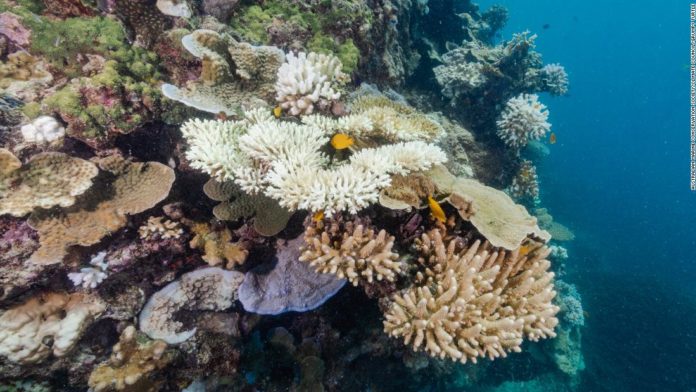It’s a rare piece of good news for the world-famous reef, which in March underwent its sixth mass bleaching event.
AIMS CEO Dr. Paul Hardisty said the results in the north and central regions were a sign the reef could still recover from mass bleaching and outbreaks of crown-of-thorns starfish that feed on coral.
“This means that large increases in hard coral cover can quickly be negated by disturbances on reefs where Acropora corals predominate,” Emslie said.
The Australian Marine Conservation Society’s Great Barrier Reef Campaigner Cherry Muddle cautioned that while the report was a sign of progress, the reef remains at risk.
“While this growth is positive and shows the reef is dynamic and can be resilient, it doesn’t discount the fact that the reef is under threat,” Muddle told CNN.
A reef in danger
Four of the reef’s six mass bleaching events have occurred since 2016. The most recent occurred in March this year, with 91% of the reefs surveyed impacted by bleaching, according to the Great Barrier Reef Marine Park Authority (GBRMPA). That’s significantly more widespread than the time before, when about a quarter of the reef surveyed showed signs of severe bleaching in 2020.
Bleaching is a result of warmer than normal water temperatures which triggers a stress reaction from the corals. However, according to GBRMPA scientists, this year’s coral bleaching was the first time it has occurred during La Niña, a weather event which is usually characterized by cooler-than-normal temperatures across the equatorial Pacific Ocean.
According to Jodie Rummer, associate professor of Marine Biology at James Cook University in Townsville, the frequency of the mass bleaching events is cause for concern.
Australia’s responsibility
However, experts say that a 43% cut in emissions is still not enough to prevent the worsening effects of climate change and further damage to the Great Barrier Reef.
“In Australia, to do our share, we really need to slash our emissions reductions by 75% by 2030 and that is to hold global warming to less than 1.5 degrees which is the critical threshold for the survival of coral reef as we know it,” Muddle told CNN.
“We can create jobs, we can protect the reef, if we only embrace clean energy technology and stop all new coal and gas developments,” she added. “There’s momentum in the right direction but we need to see action, like bold action, and we need to see it now.”
Source : Nbcnewyork













